Abstract
Efficient and reliable classification of visual stimuli requires that their representations reside a low-dimensional and, therefore, computationally manageable feature space. We investigated the ability of the human visual system to derive such representations from the sensory input-a highly nontrivial task, given the million or so dimensions of the visual signal at its entry point to the cortex. In a series of experiments, subjects were presented with sets of parametrically defined shapes; the points in the common high-dimensional parameter space corresponding to the individual shapes formed regular planar (two-dimensional) patterns such as a triangle, a square, etc. We then used multidimensional scaling to arrange the shapes in planar configurations, dictated by their experimentally determined perceived similarities. The resulting configurations closely resembled the original arrangements of the stimuli in the parameter space. This achievement of the human visual system was replicated by a computational model derived from a theory of object representation in the brain, according to which similarities between objects, and not the geometry of each object, need to be faithfully represented.
Full text
PDF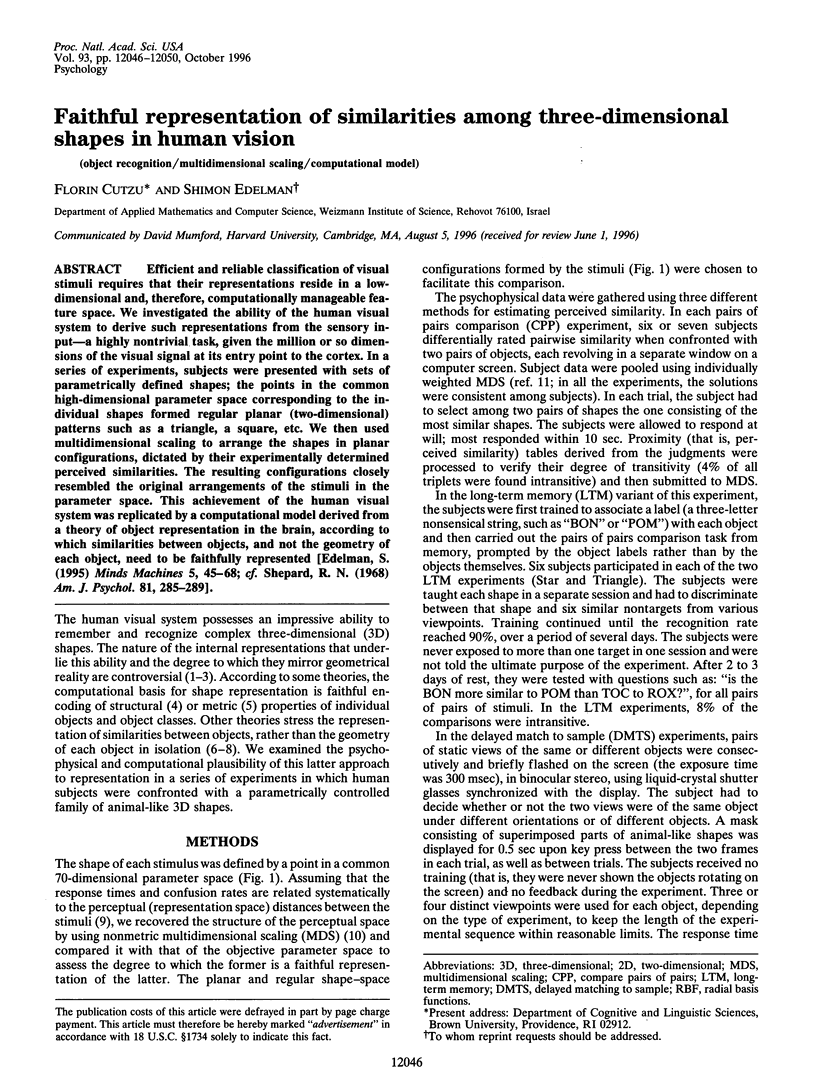
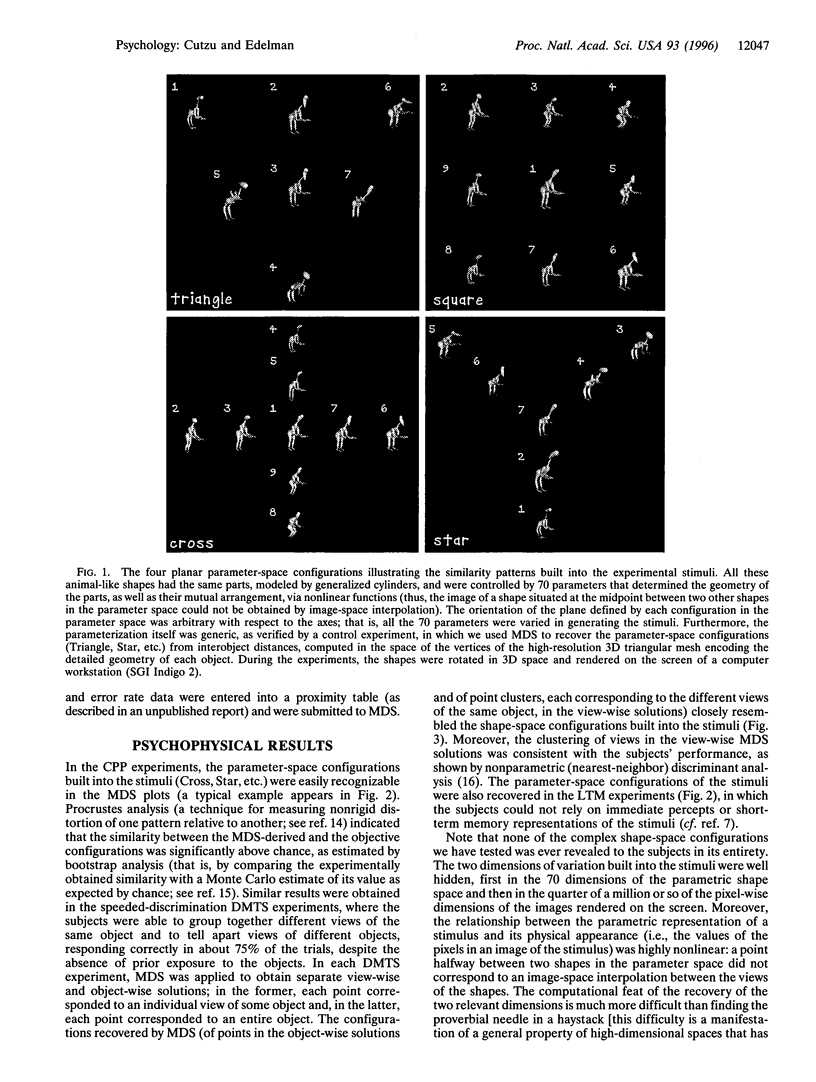
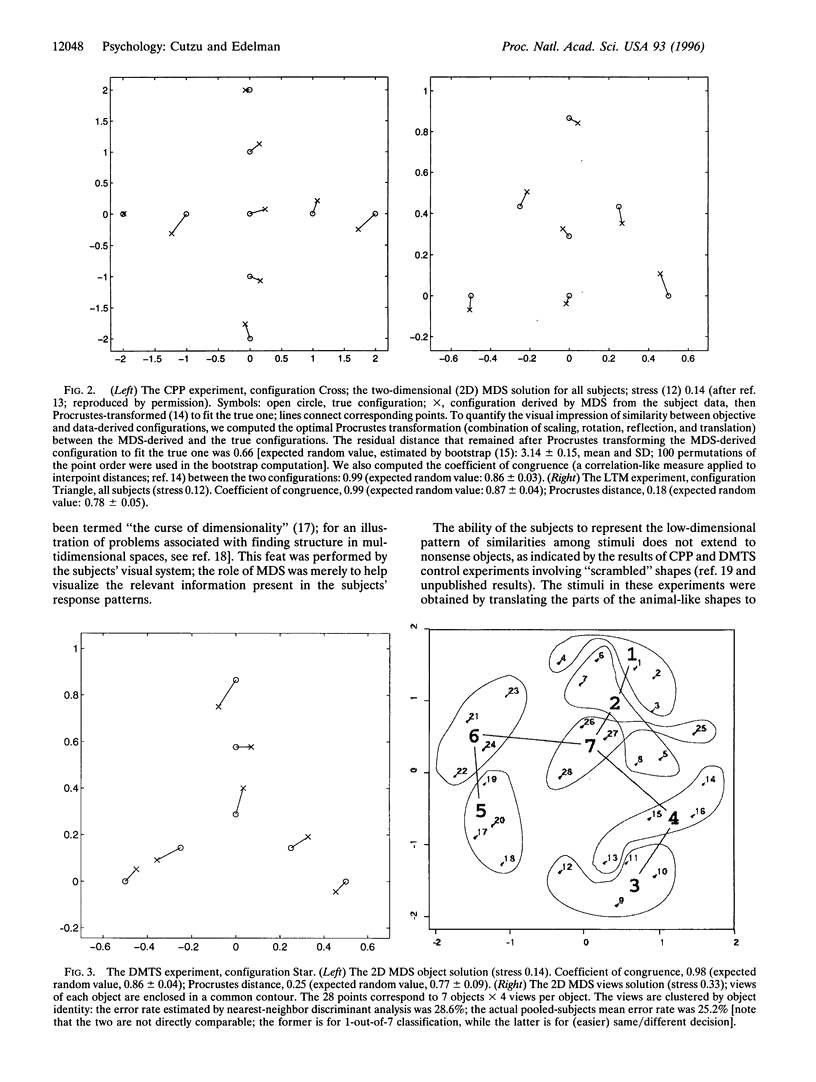
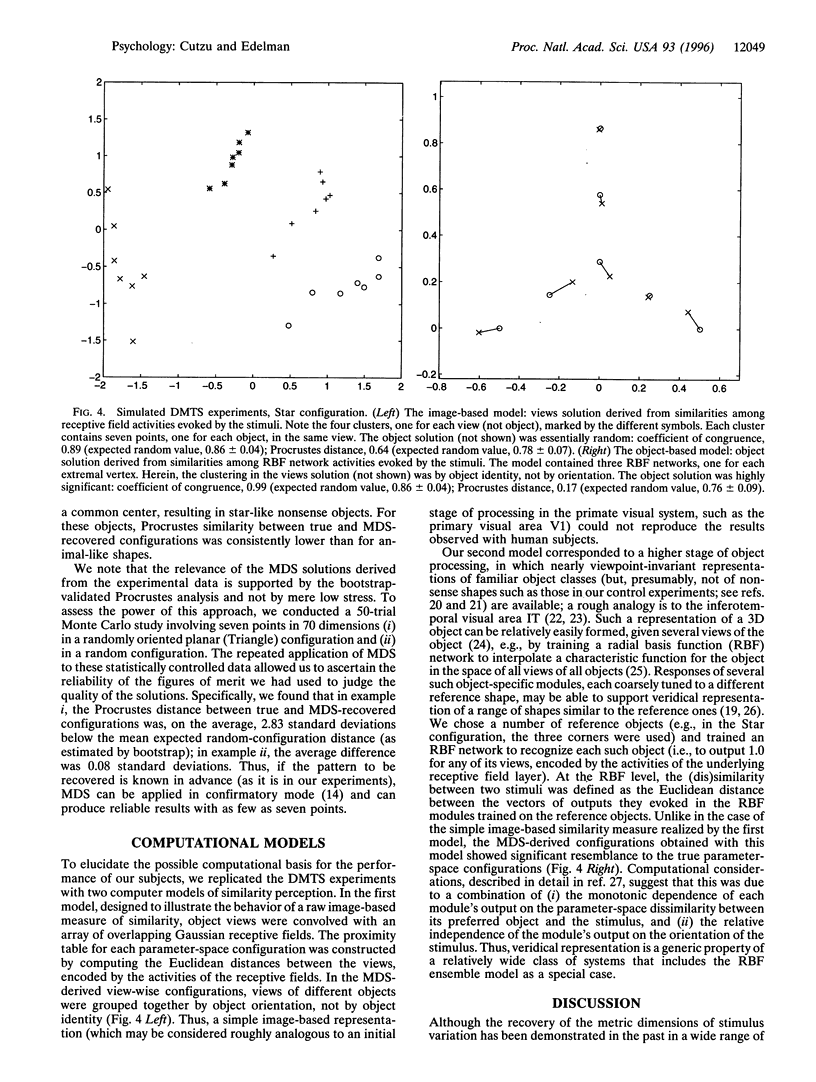
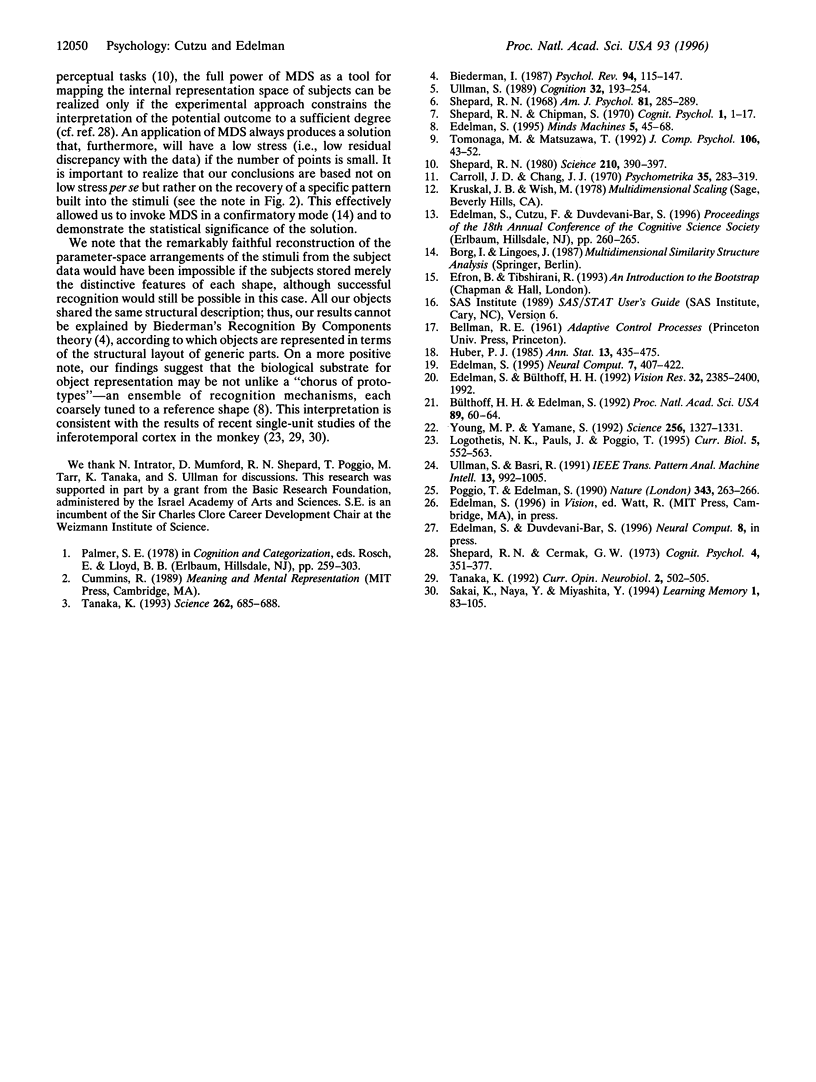
Images in this article
Selected References
These references are in PubMed. This may not be the complete list of references from this article.
- Biederman I. Recognition-by-components: a theory of human image understanding. Psychol Rev. 1987 Apr;94(2):115–147. doi: 10.1037/0033-295X.94.2.115. [DOI] [PubMed] [Google Scholar]
- Bülthoff H. H., Edelman S. Psychophysical support for a two-dimensional view interpolation theory of object recognition. Proc Natl Acad Sci U S A. 1992 Jan 1;89(1):60–64. doi: 10.1073/pnas.89.1.60. [DOI] [PMC free article] [PubMed] [Google Scholar]
- Edelman S., Bülthoff H. H. Orientation dependence in the recognition of familiar and novel views of three-dimensional objects. Vision Res. 1992 Dec;32(12):2385–2400. doi: 10.1016/0042-6989(92)90102-o. [DOI] [PubMed] [Google Scholar]
- Logothetis N. K., Pauls J., Poggio T. Shape representation in the inferior temporal cortex of monkeys. Curr Biol. 1995 May 1;5(5):552–563. doi: 10.1016/s0960-9822(95)00108-4. [DOI] [PubMed] [Google Scholar]
- Poggio T., Edelman S. A network that learns to recognize three-dimensional objects. Nature. 1990 Jan 18;343(6255):263–266. doi: 10.1038/343263a0. [DOI] [PubMed] [Google Scholar]
- Sakai K., Naya Y., Miyashita Y. Neuronal tuning and associative mechanisms in form representation. Learn Mem. 1994 Jul-Aug;1(2):83–105. [PubMed] [Google Scholar]
- Shepard R. N. Multidimensional scaling, tree-fitting, and clustering. Science. 1980 Oct 24;210(4468):390–398. doi: 10.1126/science.210.4468.390. [DOI] [PubMed] [Google Scholar]
- Tanaka K. Inferotemporal cortex and higher visual functions. Curr Opin Neurobiol. 1992 Aug;2(4):502–505. doi: 10.1016/0959-4388(92)90187-p. [DOI] [PubMed] [Google Scholar]
- Tanaka K. Neuronal mechanisms of object recognition. Science. 1993 Oct 29;262(5134):685–688. doi: 10.1126/science.8235589. [DOI] [PubMed] [Google Scholar]
- Tomonaga M., Matsuzawa T. Perception of complex geometric figures in chimpanzees (Pan troglodytes) and humans (Homo sapiens): analyses of visual similarity on the basis of choice reaction time. J Comp Psychol. 1992 Mar;106(1):43–52. doi: 10.1037/0735-7036.106.1.43. [DOI] [PubMed] [Google Scholar]
- Ullman S. Aligning pictorial descriptions: an approach to object recognition. Cognition. 1989 Aug;32(3):193–254. doi: 10.1016/0010-0277(89)90036-x. [DOI] [PubMed] [Google Scholar]
- Young M. P., Yamane S. Sparse population coding of faces in the inferotemporal cortex. Science. 1992 May 29;256(5061):1327–1331. doi: 10.1126/science.1598577. [DOI] [PubMed] [Google Scholar]



